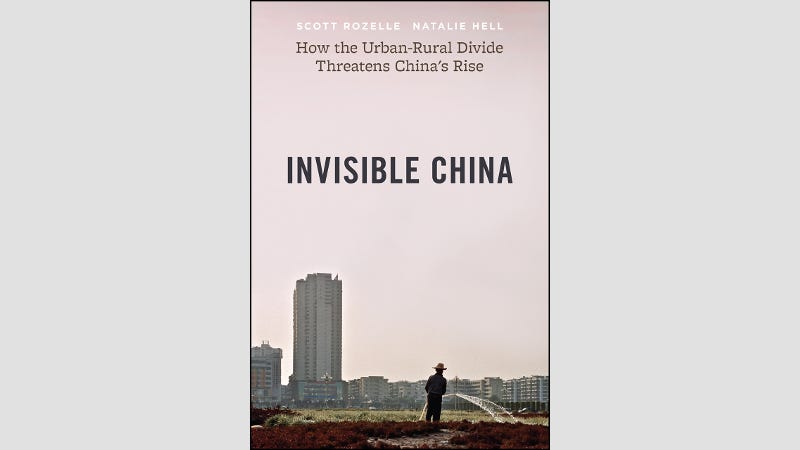[ad_1]

One of the many contradictions of modern Chinese history is the way a revolution fought primarily by and on behalf of its peasants became a government which has always, even during Mao’s time, in practice always favored the cities over the countryside. China has even carried the urban bias to an extreme seen in few other countries, or even the Soviet Union under Stalin.
The more China has developed in the past 40 years, the greater the gap between urban and rural has become. The liberalization of the economy may have started at the rural level with Zhao Ziyang’s policies in Sichuan, but the benefits were mostly seen in the trade opening and industrialization launched by Deng Xiaoping. That the villages lagged behind was not only not surprising given the pace of change – it didn’t even seem to matter too much. Tens of millions of mostly young rural people flocked to drive the new economy, operating factories and building roads and railways, and earning enough to send back to the village to raise living standards there.
China’s quite extraordinary success in rapid urbanization was achieved mainly by the sweat of a workforce which had few skills but was eager to earn, and an urban educated class quick to learn from foreign example. The results are plain for the world to see in China’s vast new cities, high-speed trains and leading role in IT and AI.
Urban Chinese and foreigners have, this book argues, forgotten about the rural left-behind. There has been a comfortable assumption that urbanization would continue, albeit at a lesser pace, and rural productivity rise and reduce income gaps. But there has always been one particularly gigantic flaw in the system, only partly ameliorated by sporadic attempts at reform: the hukou system which has created a two-class society. Thus although by most measures China is now at least 50 percent urbanized, measured by all-important hukou status only 36 percent is urban. Under the system, China’s vast army of newly urbanized workers must continue to be registered in their own home villages and provinces.
This is more than a statistic. It is fundamental, the book argues, to creating an educational deficit which if left unaddressed, will make it very difficult for China to move from middle- to higher-income status. In 2010, 44 percent of the total urban labor force did so but only 11 percent of rural ones. In other words, it will remain in the same middle-income trap as the likes of Brazil, Mexico, Turkey, and Thailand.
Now 93 percent of urban youth reach high school but rural ones lag very far behind. This might not matter so much if the rural cohort were smaller and dwindling. But, contrary to normal suppositions, the opposite has in fact been the case. Urban migrants without hukou are often forced to leave their children at home because of a lack of access to urban schools. Add in the fact that rural birth rates are higher anyway and the net result is that 70 percent of children today have rural hukou status.
The authors are in a way no hostile to China or its government system. But having spent years researching in rural China they not only feel strongly for this unseen China but want the situation to change so that China continues to prosper and thus enable the wider world to prosper. They note that long before Korea and Taiwan reached a high-income status, they were sowing the seeds of it through focus on achieving high levels of secondary and post-secondary education. China can boast top results by any international standards if the yardstick is some big city schools. But as of 2015 the share of the labor force with at least a high school education was only 30 percent, less than the likes of Brazil or the middle-income average of 36 percent.
Other things may be improving faster in China but human capital takes long to accumulate. China’s rural bias of an already low birth rate makes urgent action on rural education (and health) all the more important if China as a whole is to become rich.
Completed in early 2020 when the Covid-19 pandemic was closing factories, one aspect of the book seems overly pessimistic – a massive loss of low-skill jobs to other countries or to automation. But even though China’s own workforce size is now at best static, official stimulus measures still focus heavily on infrastructure projects which mostly employ low skilled labor.
President Xi Jinping is evidently well aware of the education and other rural problems, including an income gap which would cause insurgency in many countries. But given the structure of the system, and the preference for party control, outsiders may reasonably assume that it will be very difficult even for someone as powerful as Xi to drive the change in national priorities that may be required. Those are, one must assume, not merely institutional but also the financial cost of space programs, aircraft carriers and Belt and Road billions at a time when the median age of the population is about the surpass that in the US.
This article is among the stories we choose to make widely available. If you wish to get the full Asia Sentinel experience and access more exclusive content, please do subscribe to us.
[ad_2]
Source link